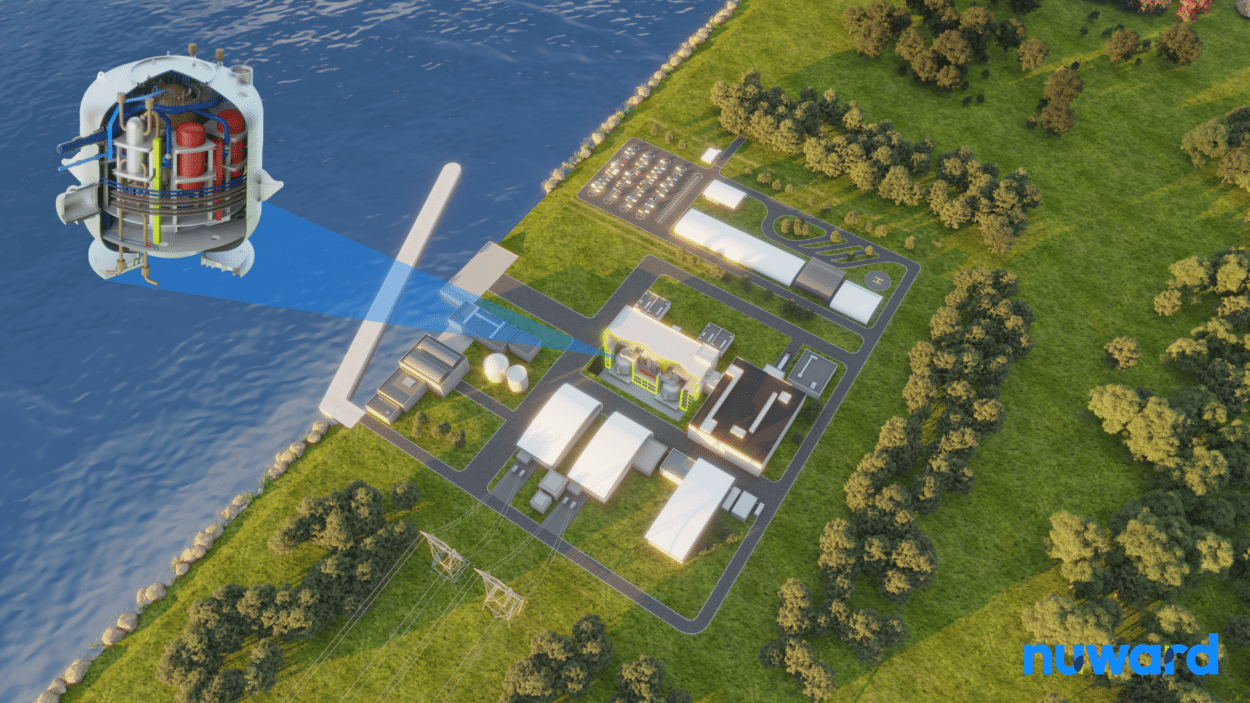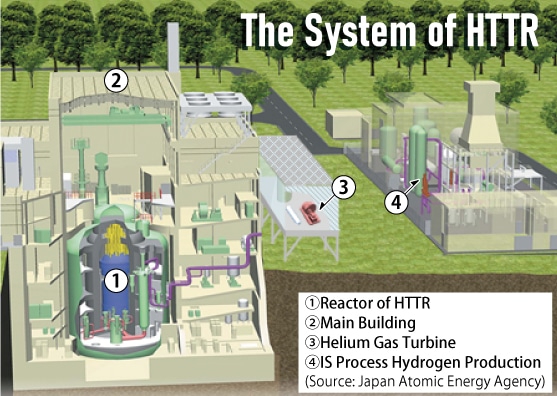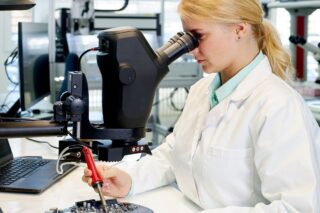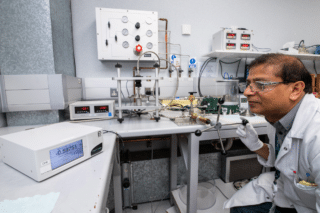There is a whole palette of colors to describe hydrogen: yellow, blue, green, and gray. In scientific literature, these colors correspond to the way this energy is produced (from hydrocarbons, renewables, or nuclear electricity). Did you know that there was a new color, red? Japan is developing a high-temperature nuclear reactor capable of producing clean, low-carbon energy called red hydrogen. This is a move towards carbon neutrality. France is also turning to these new smaller reactors. What does this mean exactly? We asked Cédric Vialle, engineer at DirectIndustry, to help us see things more clearly.
Hydrogen is the most abundant element in the universe and experts predict it will be the energy of tomorrow. Replacing fossil fuels with hydrogen combustion would allow us to reach carbon neutrality and fight effectively against global warming. It is estimated that clean hydrogen would reduce global CO2 emissions by 25%.
However, 90% of the hydrogen produced today comes from fossil fuels. It is all blue or gray hydrogen. And the objective of green hydrogen, 100% produced from renewable energies such as wind and solar, seems unrealistic because it is too expensive. Even with gas prices rising due to the war in Ukraine, green hydrogen still doesn’t seem to be catching on.
This leaves nuclear hydrogen, which has the advantage of being decarbonized. Today, yellow hydrogen is produced by the electrolysis of water using electricity coming from the nuclear energy produced by our current power plants. But the next generation of nuclear reactors using new processes will soon make it possible to produce what we are calling red hydrogen, to differentiate it from yellow hydrogen.

This is what the Japanese are developing. For several years, Japan has been testing a high-temperature reactor coupled with a hydrogen production plant using the thermochemical cycle: it’s called the HTTR (High-Temperature Engineering Test Reactor). Shut down after Fukushima in 2011, it started back up again in 2021. Its results have been so encouraging that Japan Atomic Energy Agency and Mitsubishi Heavy Industries are building the HTGR (High-Temperature Gas-Cooled Reactor) which will allow the production of clean red hydrogen in large quantities at a lower cost than green hydrogen. The facility is located in the north of Tokyo in Oarai, Ibaraki Prefecture.
France is also turning to next-generation reactors called SMR (Small Modular Reactors) which will potentially have the capacity to produce red hydrogen.
How will these future reactors work? Will they produce red hydrogen? What will the concrete applications be? What are the technical challenges facing the nuclear industry? Cédric Vialle, engineer at DirectIndustry, answered our questions.

What is red hydrogen?
Cédric Vialle: “For the moment, these are research projects. We have been working on so-called red hydrogen since 2010. The idea of red hydrogen is to produce hydrogen from a thermochemical reaction between water, iodine, and sulfur at a high temperature, around 900°C, using the thermal energy from a nuclear reactor.”

Will all nuclear power plants be able to produce this type of red hydrogen?
Cédric Vialle: “No, current power plants will not be able to produce red hydrogen. Only next-generation reactors will be able to perform cogeneration using the thermal energy of the reactor.
Next-generation reactors are small in size and power. In France, President Emmanuel Macron wants to develop this type of SMR power plant which has between 30 and 100 megawatts of thermal power. The Japanese HTGR has a thermal power of 30 megawatts.
To give you an idea, a traditional nuclear reactor that produces 1,000 to 1,400 megawatts of electrical power with an efficiency of 30% generates about 3,000 megawatts of thermal power. So we are not at all on the same scale.”


Why not use the large reactors that are already operational?
Cédric Vialle: “These new reactors will be able to reach higher temperatures than conventional reactors and thus produce heat consistently without using fossil fuels, i.e. without burning hydrocarbons. Conventional nuclear reactors also produce nuclear electricity, but with an efficiency of 30%. So there are losses. The efficiency of the electrolysis itself is between 50 and 80%. With the future reactors and the new production process, the heat produced will be used directly, which improves efficiency. Lastly, these new reactors will make it possible to produce red hydrogen in large quantities at a lower cost than, for example, hydrogen from renewable energy sources.”

Could red hydrogen replace gray and blue hydrogen?
Cédric Vialle: “That’s the idea. We know for the moment that green hydrogen is not profitable and that it probably won’t be tomorrow either. But to produce this red hydrogen, new reactors are needed. And this is raising a lot of questions in France.”

What questions, for example?
Cédric Vialle: “First of all, these nuclear reactors do not exist yet, so they have to be designed. In France, the first reactor of this type is not expected until 2030-2035. But we have a lack of skilled labor to build them.
There is also another question: the technology of these future high-temperature reactors, 900°C, poses challenges in terms of piping. Conventional nuclear reactors are around 300°C. We will have to develop special piping, reinforced with thermal protection, to withstand temperatures of 900°C. However, the production of these pipes today is complicated.
There is also the issue of cooling. In Japan, the HTGR reactor will use cooling gasses, including helium. But this poses technological challenges for structures and seals because helium molecules tend to be highly volatile and leak easily. Today, in France, we would be more inclined towards cooling with liquid salts, as is the case in some solar power plants.”


What are the advantages of small reactors?
Cédric Vialle: “Small reactors would be very interesting for isolated territories like Japan, a small island with few resources, or certain French territories like Corsica or Polynesia. This would allow us to supply these isolated territories with decarbonized energy rather than having thermal power plants as is currently the case. It would also make it possible to power all public transport networks in these areas with hydrogen.
Another advantage of these small reactors in more remote areas is that there is no need for large cooling systems dependent on rivers or the sea.
But I would also like to point out that the technology is not yet mature. Industrial production with this type of fuel does not exist yet. It’s still in the development phase. The future Japanese hydrogen production plant using energy produced by an HDGR is still under construction.”
| About Cédric Vialle | Cécric Vialle is a French mechanical engineer. He previously worked at the CNIM, a French industrial engineering contractor and equipment manufacturer where he was in charge of establishing the cost of nuclear and military projects. He then joined Airbus Helicopter. He joined DirectIndustry in 2017 as an Industry Expert in charge of selecting the best industrial equipment for decision-makers. |











